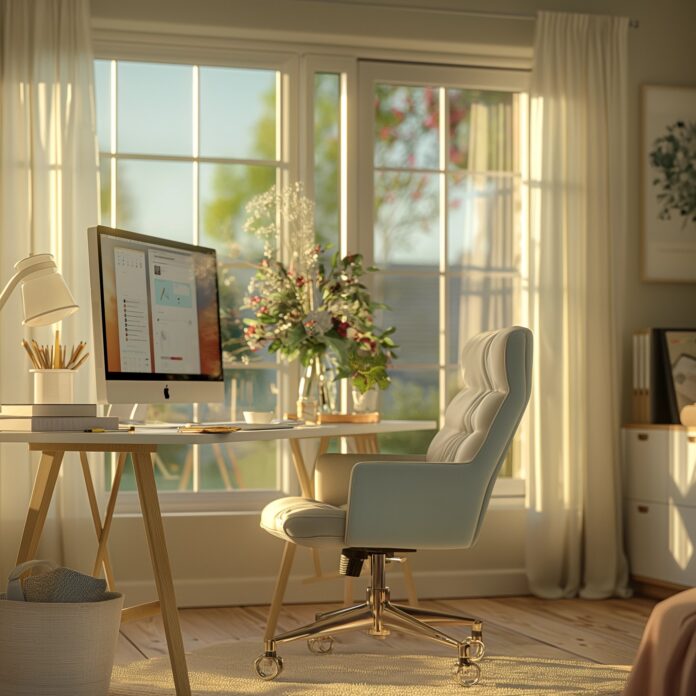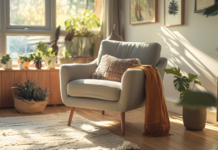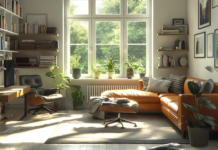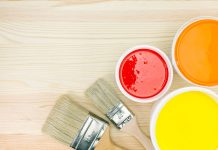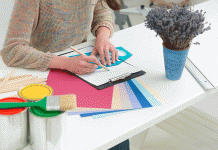The Evolution of Home Office Design
The transformation of the modern home office from a purely functional space to one that also prioritises aesthetic pleasure and psychological comfort marks a significant shift in design philosophy. This evolution is driven by the growing recognition of the importance of a workspace that supports both productivity and personal well-being.
The adoption of pastel colours is a standout trend in this shift. Far from being just a style choice, the use of pastels is deeply entrenched in colour psychology and interior design principles. These hues are selected for their calming effects, which help to reduce stress and promote mental clarity.
By integrating pastels, designers create environments that not only facilitate efficiency but also nurture users’ emotional and psychological health, thereby enhancing their overall work experience. This holistic approach to home office design reflects a broader trend towards creating spaces that are as psychologically beneficial as they are functionally efficient.
The Psychological Influence of Pastels

Pastels, with their soft and light hues, are more than just visually appealing. These colours play a significant role in influencing a person’s mood and energy levels. According to research, colours such as pastel blue, pink, and green have a calming effect on the mind and can reduce feelings of anxiety. This is particularly beneficial in a workspace, where stress levels are often high due to tight deadlines and heavy workloads. Furthermore, pastels are known to evoke feelings of happiness and can even stimulate creativity, making them an excellent choice for environments that require innovative thinking.
Incorporating these colours into a home office enhances the space’s aesthetic value and contributes to a more tranquil and productive work environment. The gentle nature of pastel hues helps soften the starkness that often comes with traditional office decor, transitioning spaces into more inviting and warm areas.
Design Principles for Pastel-Themed Offices
Applying pastels in office design must be thoughtful to achieve the desired psychological and aesthetic effects. One of the primary design principles is integrating these colours with suitable materials. Natural materials such as wood complement pastels beautifully, creating a balanced look that promotes both warmth and minimalism. For example, a pastel blue wall paired with a light wooden desk can evoke a sense of calm and orderliness.
Another key principle is adopting a minimalist approach, often seen in Scandinavian designs. This style emphasises clean lines, uncluttered spaces, and a neutral colour palette that includes pastels. Such environments are not only trendy but also promote a sense of peace and focus, which is crucial for effective work-from-home setups.
Functional Spaces and Decor Strategies
Designing a pastel-themed home office goes beyond choosing the right shades. The space’s functionality is paramount. Efficient, clutter-free layouts that strategically use the available space are essential. Incorporating ergonomic furniture, like chairs that provide proper support and desks at the correct height, enhances comfort and reduces the risk of physical strain.
Decor strategies in pastel-themed offices often start with subtle accents before fully committing to the colour scheme. One might begin with pastel-coloured accessories such as vases, curtains, or cushions and gradually introduce larger elements like furniture or wall colours. This phased approach allows for gradual adaptation to the colour scheme, ensuring that the decor remains balanced and not overwhelming.
The integration of natural and ambient lighting also plays a crucial role in enhancing the softness of pastels. Natural light not only makes the colours appear more vibrant and true to tone but also contributes to the overall well-being of individuals using the space. In areas where natural light is limited, ambient lighting solutions can replicate a similar effect, maintaining the integrity of the pastel hues and the mood they create.
Emotional and Aesthetic Appeal
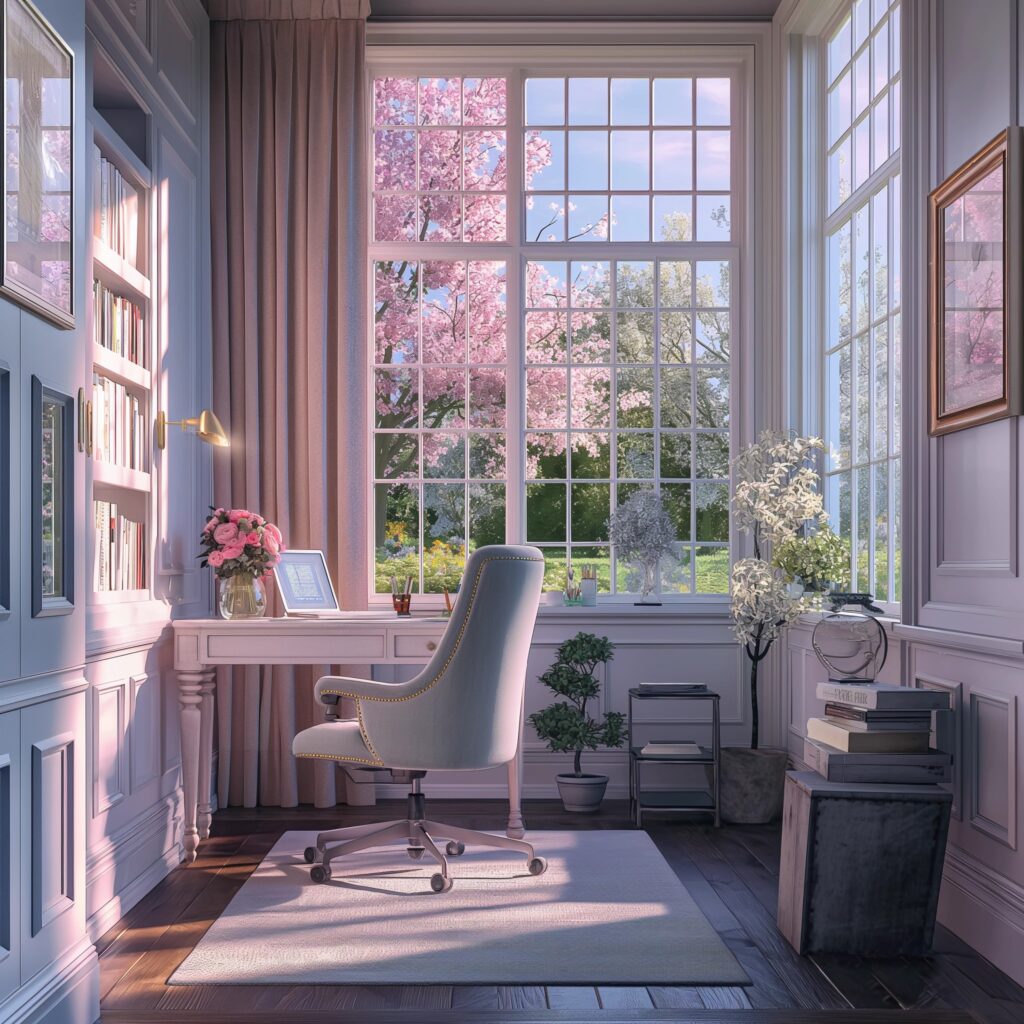
While functional aspects are vital, the emotional and aesthetic appeal of the office cannot be overlooked. Decor plays a significant role in making an office not just a place of work but also a source of inspiration. Pastel colours can be used not just on walls or furniture but also in art pieces, rugs, and other decor items. These elements can add layers of texture and warmth, making the office feel more personal and inviting.
Artwork and decorative items in soft hues can serve as focal points or sources of inspiration. For instance, a gallery wall featuring inspirational quotes in serene pastel tones can motivate and uplift. Similarly, incorporating elements like soft fabrics and tactile materials can enhance the comfort level of the office, making it more enjoyable to spend time in.
Trend Observations
The rising popularity of pastels in home offices can be attributed to influencer and community-driven trends. These subtle hues are celebrated for their ability to create a tranquil and stylish workspace that aligns with contemporary design preferences. As more individuals look to influencers for inspiration, the adoption of pastels reflects a broader shift towards aesthetics that emphasise both comfort and minimalism in modern work environments.
Community and Collaboration
Even though the home office is a personal space, community interaction and collaboration cannot be underestimated. Engaging with online communities of like-minded individuals can provide not only inspiration but also practical tips on how to optimise home office setups. Sharing one’s own experiences and solutions can also contribute to this community, helping others while reinforcing one’s own sense of belonging and achievement.
Symbolic Spaces
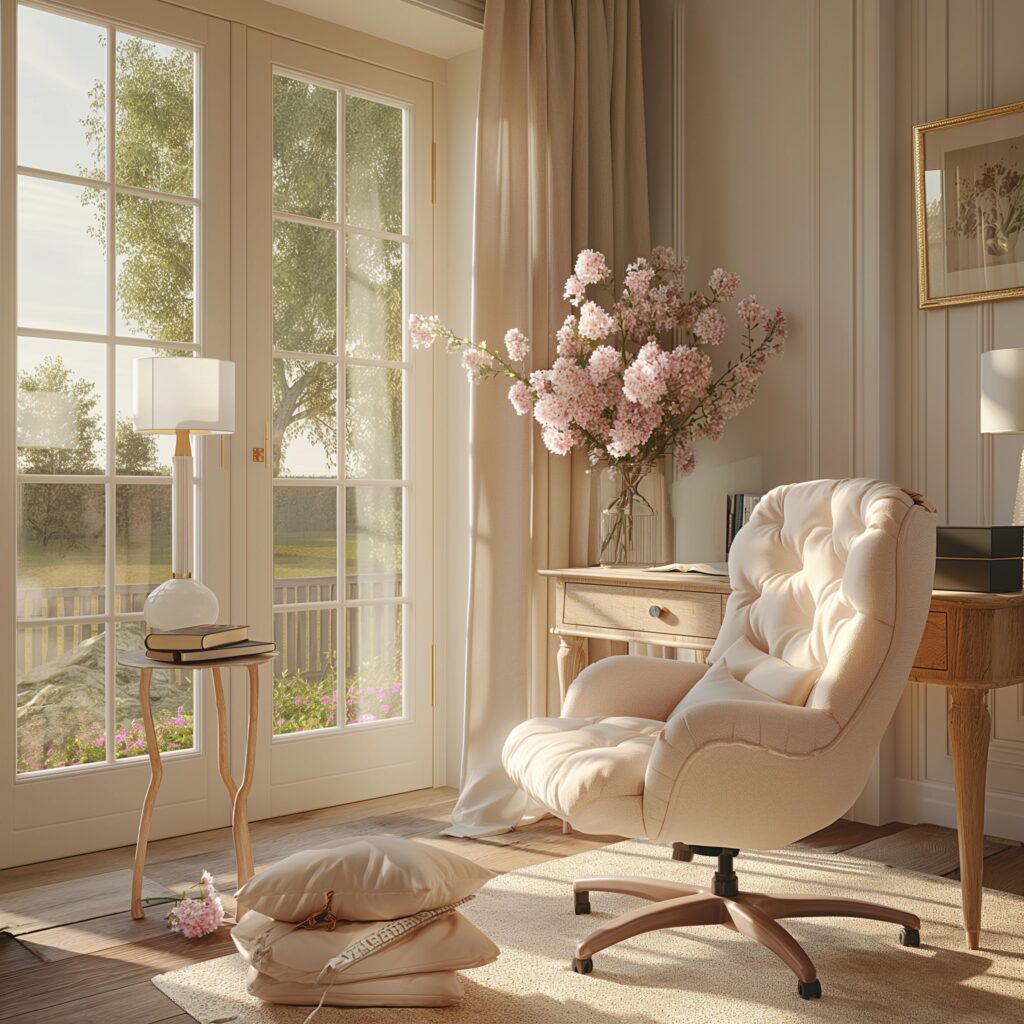
Gallery walls are inspirational backdrops in home offices, showcasing personal tastes and inspiring creativity. Strategic seating arrangements effectively delineate work and leisure areas, enhancing functionality without sacrificing style. The aesthetic range from shabby chic to modern allows for personal expression and adaptability, catering to diverse preferences.
These design choices not only optimise space utility but also enrich the visual and emotional experience of the office, making it a versatile environment conducive to both productivity and relaxation.
Final Thoughts
The journey to creating a personalised, flexible, and productive home office is continuous and evolving. By embracing pastels and the principles of thoughtful design, we can create spaces that inspire creativity and efficiency and promote well-being and sustainability.
As each individual’s needs differ, so too will the interpretation and implementation of these design elements, leading to a diverse spectrum of home office environments that are as unique as their occupants. This personalisation not only enhances the space’s functionality but also enriches the work experience, making the home office a true reflection of one’s professional and personal identity.


